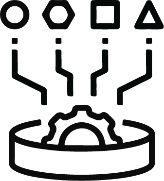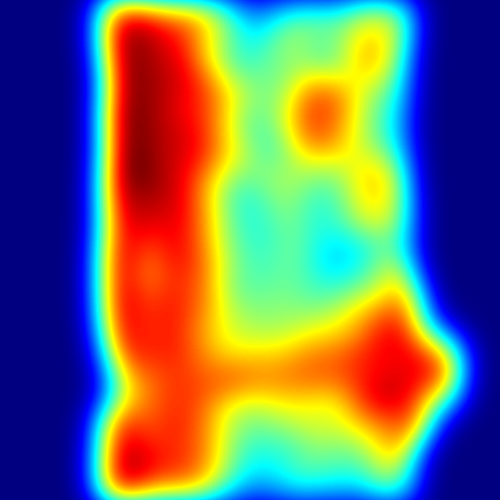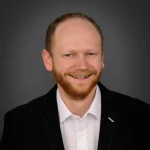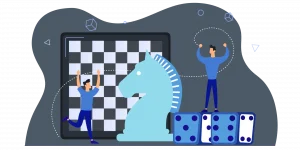We all want healthy teeth and beautiful smiles and at BRAIN:IT we care about the quality of our healthcare. Thanks to our 3D Comparator app, we select the best dental technicians in the whole country and maybe even the whole world. At Brain:IT, we have once again decided to help our healthcare industry by using 3D Comparator and talent tests from the Jessenius Faculty of Dentistry’s database of applicants.
Characteristics of the customer
Jessenius Faculty of Medicine is one of the three medical faculties of public universities in the Slovak Republic. It was established as an independent faculty in 1969 and is an integral part of the Comenius University. It provides the opportunity to study in the General Medicine study program in Slovak and English, in the Dentistry study program and in other medical and non-medical study programs. Jessenius Faculty of Medicine is one of the leading faculties not only within the Comenius University, but also among the leading institutions of undergraduate medical education in the world. Excellent workplaces are available not only in basic and pre-clinical disciplines, but also in clinical study bases at the Martin University Hospital. Since the selection of new students for the dental degree program is limited to 11 students, it is necessary that only the best of the best is selected. In this case study, you will read how we at BRAIN:IT helped with the selection of the most talented applicants.

Our challenge and goals
Every year, the admission committee must select only the best 11 applicants out of 100 to 200 applicants to study at the prestigious Faculty of Dentistry in Martin. Due to human imperfection and subjective evaluation, in cooperation with the Jessenius Faculty of Medicine in Martin of the Comenius University, we in BRAIN:IT decided to create an objective system for evaluating talent exams for dental technicians.

Speed
- the results must be evaluated in a short time
- digitization of objects into a 3D model must be timesaving

Objectivity
- the same conditions must apply to all objects
- the reproducibility of the output must be ensured

Variability
- it must be possible to prioritize the required parameters of the model and evaluation using weights

Genericity
- the application must be able to process and compare any objects
- must work with standard 3D inputs
Our solution
At BRAIN:IT, we have developed a generic 3D Comparator tool that objectively evaluates and ranks applicants annually based on their results in dental technician talent tests. We use knowledge from the field of statistics, basic properties of objects, symmetry, or even heat maps and voxels.
Thanks to our research team, dental experts and hours spent in dental and our laboratories, we have been able to create something more than just a tool for the professional dental board. 3D Comaparator can be widely used for any comparison and evaluation of digitized 3D objects with the possibility of customizing the sample model.
Difficulty of the project
Size
2/6
Financial complexity
2/6
Time complexity
4/6
Complexity
6/6
Motivation – What was the customer's real problem?
Imagine that the dental technician has finally made you a new zirconia tooth, more precisely a crown. But how will you feel if, after the painful insertion, the new tooth presses you uncomfortably? Imagine how you look longingly in the mirror and see an asymmetrically ground tooth, and your smile becomes your nightmare? Unfortunately, this is today’s reality. We have great dental technicians who have excelled in their knowledge, but their fine motor skills and talent to grind the perfect tooth you desire is not enough. At the Jessenius Faculty of Medicine in Martin of the Comenius University, the leading dental experts said enough! They decided to introduce talent exams of motor skills into the entrance admission procedures. But what should such exams look like? Dental experts decided to subject all years of the faculty in the given field to the exam. They were given the task of carving a chess piece from a plaster block using dental tools within a limited time. The results were alarming. Many students had very poor results and they only improved very slowly with gradual progress in their studies. And for that reason, the faculty decided to introduce a form of talent exams including carving a plaster figure, but they very quickly ran into a problem. In some years, more than 200 applicants have applied, but they can only select the top 11. How to quickly and objectively evaluate so many students? How can we ensure impartiality, replicability of results and a fair process for everyone each year, but also across all subsequent exams?
A quote from JFLM: “Students show a significantly higher ability in manual skills compared to previous years.”
An exam
The course of the exam may sound easier than it seems, but it is a very exhausting process. In addition to the already known National Comparative Examinations (NCE), it is also necessary to undergo the Manual Skills Test (MST), the so-called talent entrance examination. The exam of manual skills checks the fine motor skills of the applicants and consists in the practical cutting of a copy of the specified model (template), for example a chess piece, from a plaster block using the supplied modeling tools (modeling knives, lectrons) in a set time of 180 minutes.
Approach
At the end of the exam, anonymized figures are collected from the candidates and taken to the dental laboratory. First, the figures need to be scanned on a 3D scanner, which is used to produce dental crowns and implants. The dental technician carefully and precisely fixes the carved figure into a specialized clamping holder and inserts it into the 3D scanner. The technician then starts the digitization process into a 3D model (STL format). The whole process takes a few minutes, and at the end of it, a unique identifier is assigned to the created 3D model.
Subsequently, it is our turn from BRAIN:IT, when we load the prepared 3D models of figures into our 3D Comparator application together with the sample model of the talent test. First, centering with respect to the sample model must take place, and we do this using the CPD (Coherent Point Drift) algorithm, which is based on statistics, specifically the maximum likelihood method. If you are interested in this algorithm, see Coherent Point Drift.
And now begins the calculation of basic characteristics such as:

Height

Width

Depth

Circuit

Surface

Contents
In the end, these basic characteristics are compared with the characteristics of the sample model and thus we can determine the first deviations. This is followed immediately by symmetry, which is important for dental experts, it is closely related to the subjective feeling of beauty, and we also need to allocate a place for it in our evaluation.
And now something you’ve probably heard before, but probably in a different context. These are thermal maps or commonly called heat maps. In our case, we used the SSCD (Spatial Structure Circular Descriptor) algorithm to create them, and we then compare them against the sample model. If you want to know more, see Spatial Structure Circular Descriptor.
Heat maps from modeled figures - sample and comparison model created by the student
Sample model





Comparison model





And finally, it is necessary to evaluate everything by comparing it with the sample model. A weighted error is determined, and the resulting percentage agreement is then calculated from it. All data, and especially the results, will be clearly displayed in graphic form, and at the same time an Excel file will be created, necessary for the processing and evaluation of the exam.
Advance mode is intended only for trained experts and our creators.
- Quick display of 2D representation
- The resulting ranking from the most similar model to the model with the largest deviation
- Control panel for step-by-step work with models
- It starts all the steps, and you can go for a coffee while the application prepares the results for you
- In the settings, it is possible to variably set the weights by individual parameter of the objects, and this will affect the resulting evaluation
Customer benefit
And how did we contribute to the improvement of the manual skills of future dental technicians and therefore also of all future patients?

- Approximately two-fold improvement in manual skills after the end of the first pilot year compared to older years.
How can it be measured? Simply, at the end of the first year, a small tooth, more precisely a crown, is created during practice based on the model. The students of previous years barely managed to make one tooth by the end of the exam. New freshmen from the pilot year were able to make two teeth according to the assignment at the same time.

- Increasing the quality of our dental technicians. We all want a nice smile and at BRAIN:IT we are happy to have a reason to be happy about a job well done.
Customer feedback
“We had an enormous number of applicants, but very little time to evaluate them. It was beyond our power to do it by hand.”

















